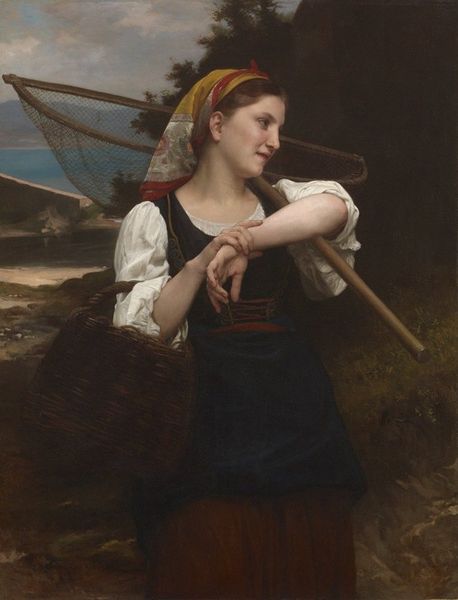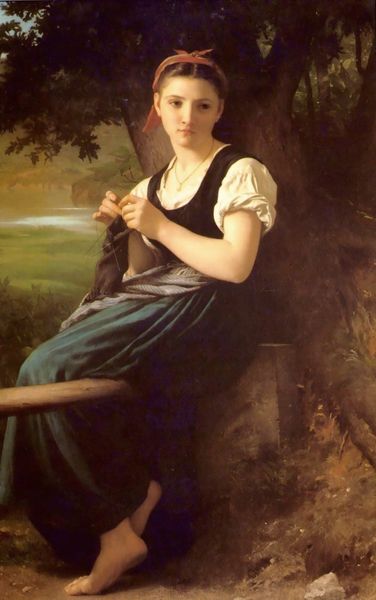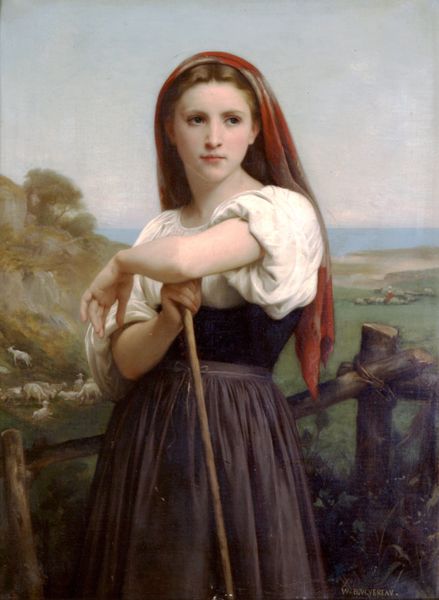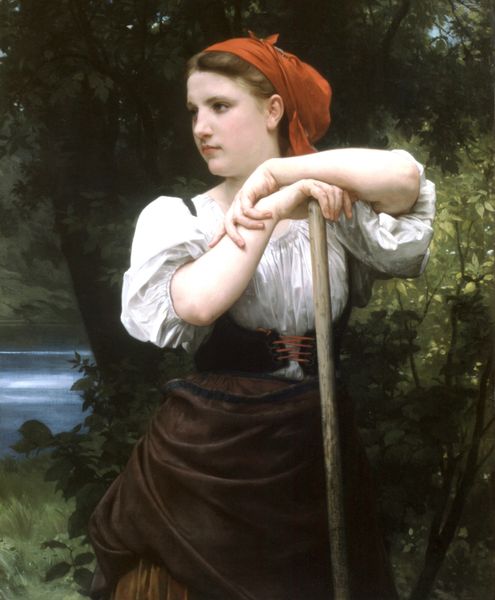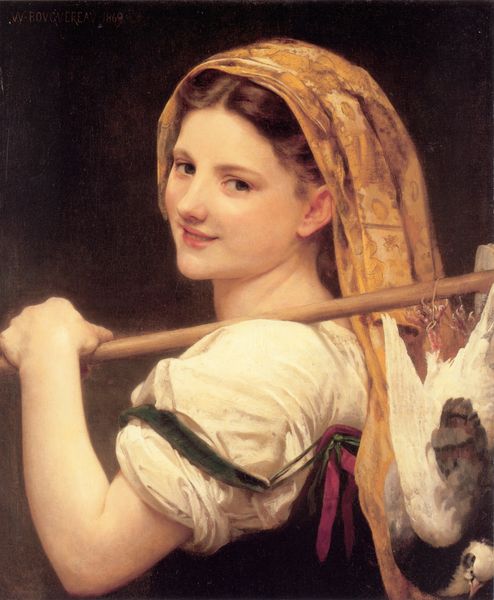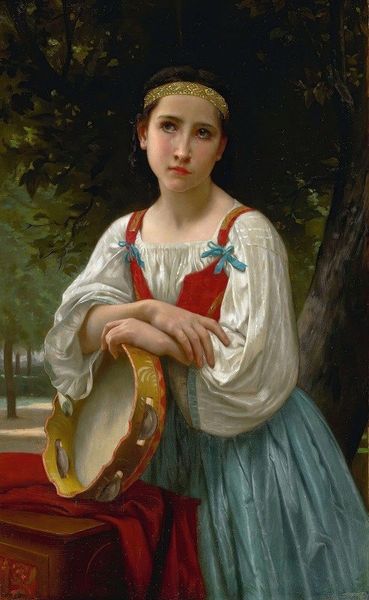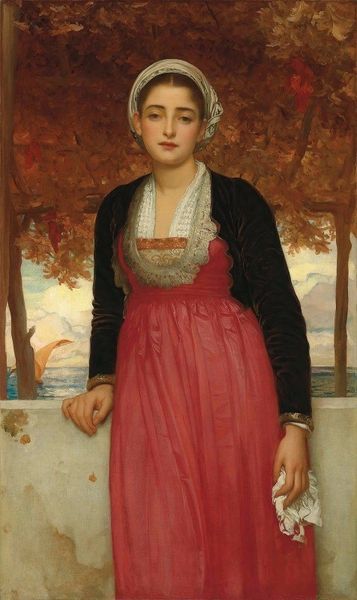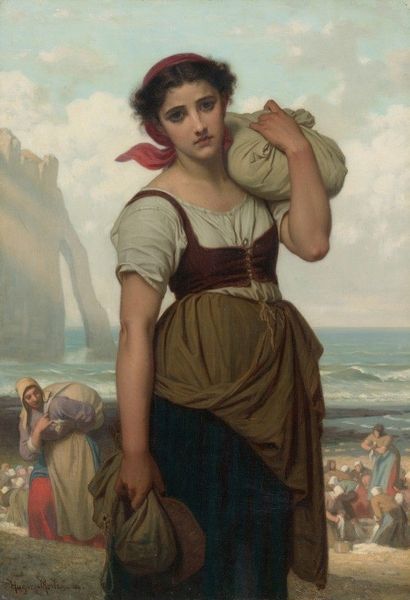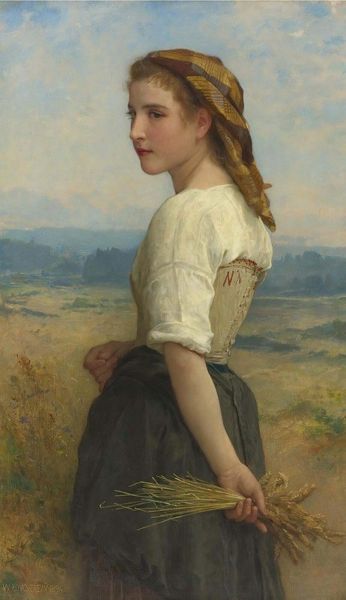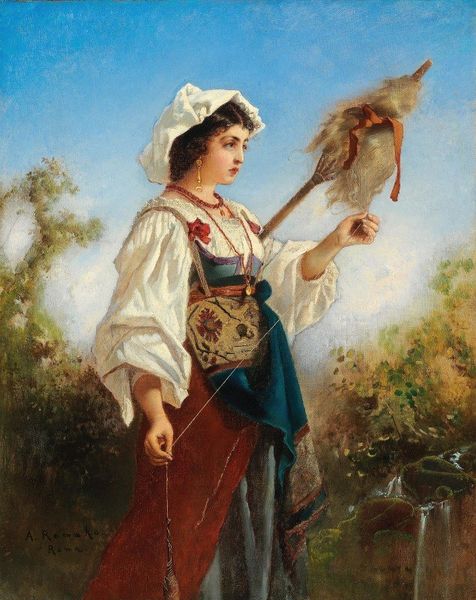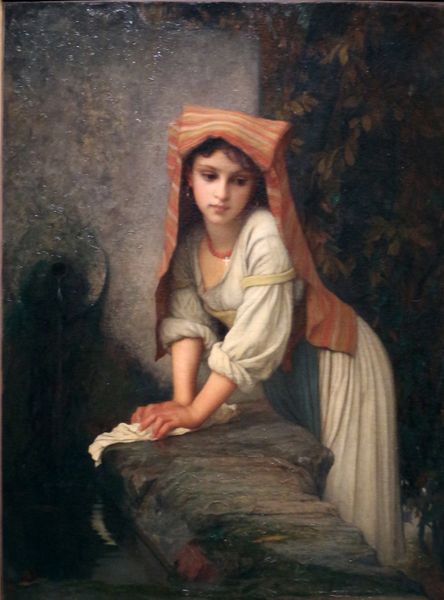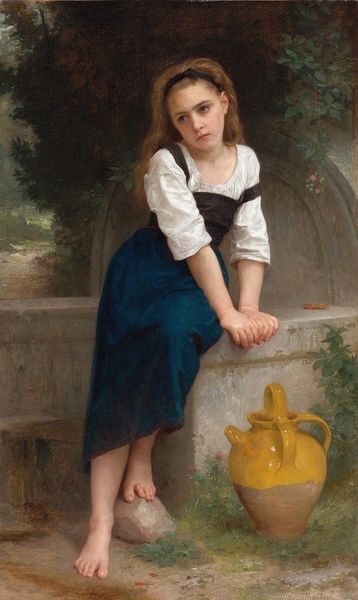
Copyright: Public Domain: Artvee
Curator: Look at this beautiful rendering, ‘La faneuse,’ or ‘The Haymaker,’ crafted by William Bouguereau around 1870, utilizing oil paint on canvas. The scale feels quite intimate, doesn’t it? What captures your attention first? Editor: Immediately, there's a sense of idealized rural life that sits uncomfortably with me. The woman looks posed, almost theatrical, not someone truly engaged in the demanding labor implied by the title. Her expression reads more "pensive" than "perspiring." Curator: The theatrical element is undeniable, Bouguereau certainly employs a romanticized lens here, channeling ideals of beauty through classical motifs, echoing nymphs and goddesses of old, especially in her serene expression. Think about it: her upraised arm holds a tool, mimicking classic images of heroic or divine figures. The hay rake, transformed into a symbolic staff! Editor: And yet, there’s a profound disconnect. In the wake of the French Revolution, how do we read an image that idealizes peasantry when the material conditions of working-class people were often dire? There's a danger of obscuring real-life hardships. Curator: Certainly, the symbolic language is crucial, but perhaps it offers a form of escapism, or even aspiration, rather than outright deception. The yellow headscarf becomes almost a halo, lifting her status. The way she poses is iconic, drawing upon our collective visual memory of beauty. Editor: I see your point about memory, but I wonder: Whose memory does she truly represent? Is this a visual language that genuinely resonates with the working class, or is it more reflective of the bourgeoisie and the upper class that commissioned and consumed such artworks? It feels more aligned with fantasy. Curator: Maybe the artist tried to find something more genuine than a cold and crude realism could have provided. A form of transcendence of the real circumstances through idealism. I think what is remembered transcends political context. Editor: Perhaps. But to really appreciate this artwork, it’s critical to confront the politics inherent in Bouguereau’s visual vocabulary and to understand how that vocabulary shapes our present-day readings and receptions of the subject portrayed in it.
Comments
No comments
Be the first to comment and join the conversation on the ultimate creative platform.
